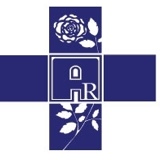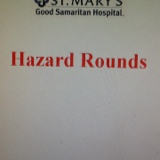Information
-
Audit Title
-
undefined
-
Document No.
-
Client / Site
-
Conducted on
-
Prepared by
-
Location
-
Personnel
Correct Patient Identification
-
Patients are identified using two patient identifiers before treatment, diagnostic procedures, providing treatment, and performing other procedures
-
-
Patients elements such as patient sample/ specimen, mother milk bottle and other patient related items are labeled using the same two identifier's approved by hospital policy
-
-
-
Handover is performed using approved nursing handover forms
-
Medication Administration
-
Independent double check is performed for High alert medications
-
Medications are given through BCMA
-
Proper documentation in MAR
Falling Down Prevention
-
Patient is assessed for the risk of falling down every shift and upon change of condition
-
Falling preventions are applied for high risk patients
-
Patient and family are educated about hospital falling down prevention strategies
-
Patient falls Adverse event is timely reported to quality unit
Pressure Injury prevention and Management
-
Skin assessment and pressure injury risk assessment is performed upon admission and every shift
-
Prevention interventions are implemented for patient at risk
-
Patient with wound is assessed and followed by wound team<br>
undefined
-
-
-
Patient food & drinks: No expired items. Stored separately from employee food and drinks, no co-mingling.
-
Biohazard Waste:<br> * Discard in Red Bags with a biohazard symbol<br> * Not overfilled<br> * Covered containers<br> * Contains only biohazardous waste, no trash<br> * Stored in a secure area<br><br>
-
Soiled Linen: Properly stored in closed container and not overfilled.
-
Separation of clean vs. dirty supplies & equipment:<br> * Clearly marked<br> * No co-mingling of supplies, medications, waste, or food.
-
Patient care supplies:<br> * Not expired, damaged, or soiled.<br> * No open single use products. multi-use supplies labeled with expiration date according to manufacturer's recommendations for opened product.
-
Linen and Linen Carts: Covered and carts have solid bottoms. Pillows are cleaned and bagged for storage or considered dirty, to be cleaned prior to use. if dirty not stored with clean linens.
-
Sharps Waste:<br> * Placed in puncture resistant sharps container with lid.<br> * Disposed of when 3/4 full or "full" indicator<br> * Mounted appropriately<br> * Stored in secure location
-
General Cleanliness:<br> * Observe surfaces for high dust & residue, floors, stairwells, nutritional area, med prep areas, lobby, exam rooms, bathrooms, equipment, decorative items, curtains, blinds, or drapes. <br> * No blood or bodily fluids<br> * Staff using hospital approved cleaning products according to manufacturer's recommendations
-
Air vents: Clean
-
All items that come in contact with patients, that are not disposable, are cleaned between each patient. Includes exam tables, stretchers, chairs, blood pressure cuffs, thermometers, etc.<br> * Follow manufacturer's recommendations for cleaning surfaces, equipment, and devices.<br> * Use only hospital approved products for cleaning and disinfection
-
All reprocessing of sterile instruments done through TRMC Sterile Processing Department. <br> * Documented staff training on decontamination and transport process.<br> * Separation of clean from dirty equipment during storage and transport.<br> * Appropriate processes observed for decontamination, storage, and transport before and after reprocessing.
-
Coverings are clean and intact on exam tables, phlebotomy chairs, chairs in waiting areas and exam rooms - no rips or repairs needed.<br> * Coverings can be cleaned/disinfected with hospital approved product.
MEDICATION MANAGEMENT
-
Medication rooms are clean, uncluttered, and free of distractions.
-
Medication is appropriately labeled.<br> * Samples labeled with expiration dates, directions, etc.. prior to dispensing to the patient<br> * Miultidose vials labeled when opened with expiration date<br>
-
Sample log contains current inventory and ability to track medications to patients. At minimum, log includes lot number, drug name and strength, patient identifier, date, and number dispensed.
-
All medications, needles and syringes are secured in locked cabinet, locked room, or under constant staff surveillance.
-
Controlled substances secured to prevent diversion.
-
Medications, formula, & solutions not expired. <br> * Expiration date of manufacture is applicable to unopened package <br> * Labeled with expiration date after opening (28 days unless no preservative present, then 24 hours)
-
Opened multi-dose vials dated with 28-day expiration date (or sooner by manufacturer's recommendation) and initialed. Not expired. No reuse of vials labeled for "single use"
-
Code Carts:<br> * Locked and marked with then first drug to expire.<br> * Checked per policy and log complete<br> * Includes defibrillator check while on battery power.<br> * Extra locks kept secured.<br> * All supplies & drugs that are on the inventory list are on the cart.<br> *. Cart is clean.<br> *. O2 tank is >1/2 full
-
Syringes are labeled per policy if multiple syringes present or one not immediately used (drawn up and taken directly to patient for administration, does not leave the hand of the nurse)
-
Medication refrigerators contain only TRMC medications (no patient prescriptions brought in from outside pharmacy except allergy injections).
WAIVED TESTING / POINT OF CARE TESTING
-
Point of Care testing lab controls documented and control solution labeled & dated.<br> *. Reagents, i Stat analyzes, glucometers, GEMS
-
Point of Care Testing Quality Control:<br> *. Consistently and correctly documented<br> *. Dates missing initials<br> *. Performed by qualified person<br> *. Out of range is followed<br> *. Logged numbers match bottle ID numbers<br>
-
Additional information?
Untitled Page









